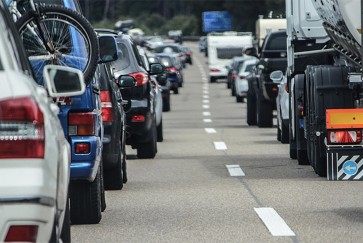If the Chicago region replaced 30% of all on-road combustion-engine vehicles — including motorcycles, passenger cars and trucks, buses, refuse trucks and short- and long-haul trucks — with electric versions, it would annually save more than 1,000 lives and over $10 billion, according to a new Northwestern University study.
The new study, which simulates air quality at a neighborhood scale, also found that areas with predominantly Black, Hispanic and Latinx residents would benefit most.
The study underscores the potential of electric vehicles (EVs) to improve air quality and mitigate human-caused climate change, while also reducing unjust exposure and health burdens — despite EVs sourcing electricity from a grid that continues to include fossil fuel-fired power generation.
The paper was published today (Sept. 13) in the journal Environmental Research: Infrastructure and Sustainability.
“A common misconception regarding EVs is that areas near powerplants — which are often minority communities — disproportionately suffer the burden of poor air quality due to increased electricity demand and powerplant emissions output,” said Northwestern’s Maxime Visa, the study’s lead author. “Our study found that on-road emission decreases more than offset powerplant emission increases.
“The greatest air quality benefits from wholesale EV adoption are co-located with disinvested communities that, historically, have been susceptible to poor air quality due to systemic injustices and their proximity to highly frequented roads and interstates. Our results indicate that vehicle electrification is one potential solution for addressing long-standing air quality-related inequities in and around the city of Chicago.”
The study’s senior author is Daniel Horton, an assistant professor of Earth and planetary sciences at Northwestern’s Weinberg College of Arts and Sciences, where he directs the Climate Change Research Group. At the time of the research, Visa was an undergraduate researcher in Horton’s group; now he is a medical student at Northwestern University Feinberg School of Medicine.
Heavy-duty v. light-duty passenger vehicles
The new findings come on the heels of another study from Horton’s lab, which explored scenarios that replaced 30% of the predominantly diesel-powered heavy-duty vehicles (including short- and long-haul trucks, refuse trucks, and intercity, transit and school buses) in the Chicago area with electric versions. That study found that electrifying 30% of heavy-duty vehicles would save more than 500 lives and about $5 billion per year. In Visa’s study, however, the researchers electrified both light- and heavy-duty vehicles.



